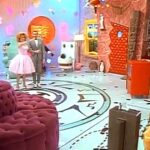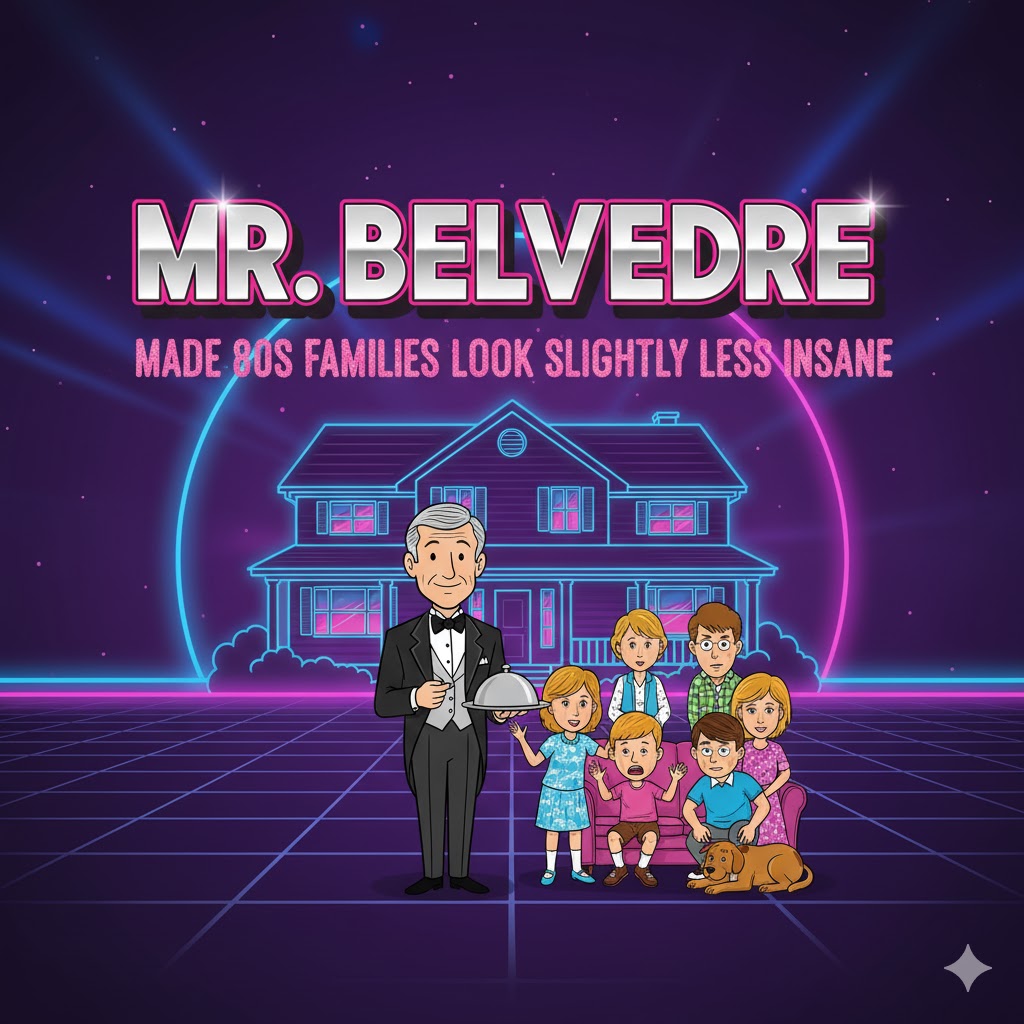 When Pee-wee’s Playhouse first aired on CBS in September 1986, it was unlike anything television had ever seen. Wrapped in manic energy, surreal visuals, and a patchwork of retro influences, the show felt like a broadcast from an alternate universe—a place where cartoons, puppets, talking furniture, and manic catchphrases coexisted in chaotic harmony. Its host, the bow-tied, high-voiced man-child Pee-wee Herman, played by Paul Reubens, wasn’t your typical children’s television presenter. He was unpredictable, strange, and gleefully subversive, yet he radiated a joy and sincerity that spoke directly to young audiences while winking at the adults who watched with them. Over its five-season run, Pee-wee’s Playhouse became a groundbreaking piece of television, earning critical acclaim, cult devotion, and a legacy that continues to influence creators today.
When Pee-wee’s Playhouse first aired on CBS in September 1986, it was unlike anything television had ever seen. Wrapped in manic energy, surreal visuals, and a patchwork of retro influences, the show felt like a broadcast from an alternate universe—a place where cartoons, puppets, talking furniture, and manic catchphrases coexisted in chaotic harmony. Its host, the bow-tied, high-voiced man-child Pee-wee Herman, played by Paul Reubens, wasn’t your typical children’s television presenter. He was unpredictable, strange, and gleefully subversive, yet he radiated a joy and sincerity that spoke directly to young audiences while winking at the adults who watched with them. Over its five-season run, Pee-wee’s Playhouse became a groundbreaking piece of television, earning critical acclaim, cult devotion, and a legacy that continues to influence creators today.
The origins of Pee-wee’s Playhouse lie in the Los Angeles comedy scene of the early 1980s. Paul Reubens created the character of Pee-wee Herman while performing with the legendary improv group The Groundlings. Pee-wee was a peculiar hybrid of a children’s show host and an overgrown, mischievous kid—part Captain Kangaroo, part Buster Keaton, with a touch of punk rock absurdity. The character proved popular enough to spawn The Pee-wee Herman Show, a stage production that ran in LA and later on HBO. That led to Pee-wee’s Big Adventure, the 1985 feature film directed by a then-unknown Tim Burton. The film’s success opened the door for a CBS Saturday morning series, and in 1986, Pee-wee’s Playhouse was born.
From the moment the Playhouse theme song (sung by Cyndi Lauper under the pseudonym “Ellen Shaw”) blared through TV speakers, viewers were immersed in a psychedelic, Technicolor dream world. The show’s set looked like a flea market exploded inside a dollhouse—bright colors, mismatched furniture, walls that blinked, windows that sang, and every object imbued with life. Chairry, the talking armchair; Magic Screen, who displayed cartoons and taught spelling; Globey, the rotating globe who spoke with a French accent; and Conky 2000, the clunky robot who handed out the “secret word”—they all inhabited this bizarre wonderland alongside Pee-wee and a rotating cast of live-action characters.
These recurring characters added even more texture to the Playhouse. Cowboy Curtis, played with infectious charm by a young Laurence Fishburne, was a rhinestone-wearing cowboy with a gentle heart. Reba the Mail Lady, portrayed by S. Epatha Merkerson, brought mail and sass in equal measure. Miss Yvonne, “the most beautiful woman in Puppetland,” had the poise of a 1950s starlet mixed with the unapologetic camp of drag performance. There were also the puppet band members, the Beatnik Puppets, the anthropomorphic toys in Puppetland, and the Dinosaur Family who watched Pee-wee’s show-within-a-show from their living room TV.
One of the show’s most beloved features was the “secret word.” Every episode, Conky would announce the secret word of the day (like “fun,” “cool,” or “house”), and whenever someone said it, everyone in the Playhouse—including the viewers—was supposed to scream. It was pure participatory chaos, a brilliant way to involve the audience and break the fourth wall. This kind of interaction wasn’t new to kids’ television, but Pee-wee’s Playhouse made it feel thrilling, even anarchic.
Despite its surreal trappings, the show was carefully constructed and deeply thoughtful. It was educational, but never preachy. It taught lessons in friendship, creativity, empathy, and imagination without ever slowing down the fun. Pee-wee might throw a tantrum or make a mess, but he always learned from it. One episode might explore how to make homemade ice cream; another might tackle jealousy, or kindness, or how to celebrate differences. And in a time when diversity on children’s television was limited, Pee-wee’s Playhouse featured a racially diverse cast, celebrated different cultures, and avoided the tired stereotypes of many 1980s shows. It embraced difference as part of the magic.
Behind the scenes, the show was a powerhouse of artistic talent. Production designer Gary Panter, a punk artist known for his raw, experimental style, created the chaotic, joyful look of the Playhouse. Animation and visual segments were crafted by some of the most cutting-edge animators of the time, including Craig Bartlett (who would go on to create Hey Arnold!), and Wayne White, who worked on puppetry and visual effects. The Playhouse was a creative sandbox where artists, writers, and designers were encouraged to push boundaries, reject convention, and make something weird and wonderful.
Critics loved the show from the beginning. It won 22 Emmy Awards during its run and was often praised for being one of the few children’s programs that treated its audience as intelligent and creative. Adults, too, found themselves drawn in—not just by nostalgia or parental obligation, but by the show’s wit, subversion, and visual innovation. Watching Pee-wee’s Playhouse felt like stepping into a painting, a cartoon, a puppet show, and an improv act all at once.
Of course, the show’s success wasn’t without controversy. Pee-wee’s manic personality and Reubens’ performance style were too eccentric for some viewers. A few parents and conservative groups found the show too weird, too noisy, or simply too confusing. But that edge—the refusal to conform to sanitized, cookie-cutter kids’ entertainment—is precisely what made the show revolutionary. It didn’t pander or condescend. It celebrated weirdness, encouraged individuality, and reminded children that being different was something to be proud of.
The show ended in 1990 after five seasons and 45 episodes. Paul Reubens made the decision to end it while it was still at its creative peak. He wanted to avoid the show becoming stale or repetitive. Unfortunately, Reubens’ 1991 arrest in an adult theater caused a media firestorm, and for a while, Pee-wee Herman became a target of late-night jokes and moral panic. CBS pulled reruns of Pee-wee’s Playhouse, and for a time, the show’s legacy was unfairly overshadowed by the scandal.
But as the years passed, appreciation for Pee-wee’s Playhouse only grew. In the 2000s, the show was rediscovered by a new generation through DVD releases and streaming platforms. What had once seemed odd or risky now looked visionary. The Playhouse was ahead of its time in so many ways: in its diverse casting, in its fusion of art and education, in its celebration of camp and queerness, in its postmodern blending of nostalgia and rebellion.
Paul Reubens himself made a triumphant return to the role, first on stage in the 2010 Broadway revival The Pee-wee Herman Show and later in the 2016 Netflix movie Pee-wee’s Big Holiday. Both were met with positive reviews and reminded audiences of Pee-wee’s enduring charm. The character never lost his wide-eyed innocence or his mischievous grin. In a world that had become more cynical, Pee-wee’s Playhouse felt like a relic from a kinder, weirder dimension.
What makes Pee-wee’s Playhouse endure isn’t just its humor or visual inventiveness. It’s the sense of liberation that pulses through every episode. The show gave kids permission to be silly, to be loud, to play without rules. It wasn’t about learning your ABCs or moral lessons in a tidy bow—it was about embracing your imagination and your individuality. Pee-wee himself, with his awkward giggle and unpredictable logic, was the perfect host. He was a child and an adult at once, full of contradictions and curiosity. He represented the part of all of us that refuses to grow up in the ways the world expects.
For anyone who watched it, Pee-wee’s Playhouse wasn’t just a Saturday morning cartoon block. It was a place. A place where clocks danced, couches talked, robots delivered wisdom, and every day was an adventure. A place where screaming the secret word at the top of your lungs was not only accepted but expected. A place where weird was wonderful.
In the history of children’s television, few shows have dared to be as unhinged, artistic, inclusive, and celebratory of chaos as Pee-wee’s Playhouse. And maybe that’s why it continues to hold such a special place in the hearts of its fans. Long after the final episode aired, the doors of the Playhouse remain open—in our memories, in our imaginations, and in the joyful echo of a voice calling out, “Come on in and pull yourself up a chair!”


